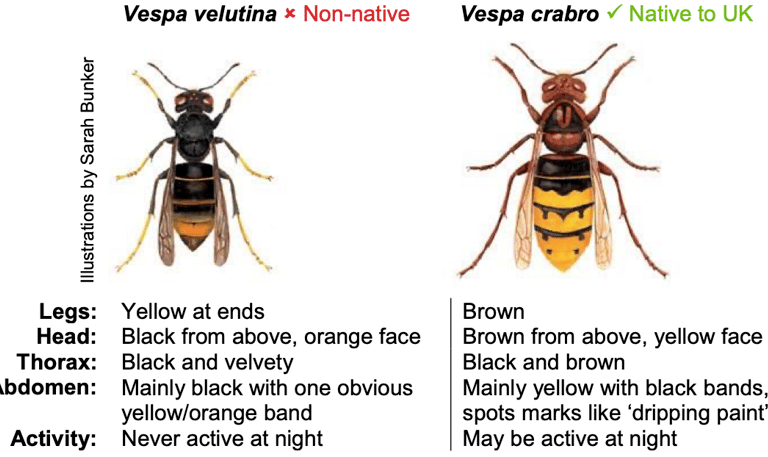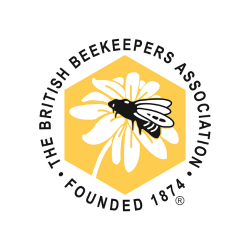
Bee Swarms
Found a swarm of bees in the Lincolnshire Wolds?...
Bee Swarms in Louth and Lincolnshire
If you have come across a swarm of bees in Louth, or anywhere in the Lincolnshire Wolds, here's what to do...


Contact
Once you are aware that it is a honey bee swarm that you have discovered then give us a call. Then we can assess whether it is possible to perform bee removal.
Information
We will need some information about the honey bee swarm that you have come in contact with. We will need to ideally have a picture of them, know the position of them (are they in a tree, in a chimney etc.), we will also require an address.
Identify
It's honey bee swarms in Lincolnshire that we can assist with, therefore you will need to make sure that the swarm in question is a honey bee swarm before we can consider bee removal. See below to learn how to identify a honey bee swarm.
LOUTH & LINCOLNSHIRE WOLDS SWARM CONTACT: 07950 286792
NORTH WILLINGHAM, TEALBY, LUDFORD SWARM CONTACT: 07856 592176
WALTHAM, NEW WALTHAM, GRAINSBY SWARM CONTACT: 07925 913020
LEGBOURNE, CARLTON, GRIMOLDBY, MANBY SWARM CONTACT: 07412 606859
Identify a swarm of honey bees...
Across the British Isles there are well over 200 species of bees, for us it is important to know that the bees that you suspect are honey bees are in fact honey bees. We are only able to assist with honey bee removal.


The Honey Bee
Though honey bees vary somewhat in their appearance, a swarm of honey bees is usually not to tricky to identify. Honey bees colour can vary from almost black to a stripy ginger. Honey bees are reasonably small in comparison to bumble bees, more slender and only have fur on the eye area and chest. The antennae on the honey bees is very distinctive as they are bent at almost a right-angle, which is unlike a wasp which are gently curved.


Wasps
Distinctively, yellow and back and much smoother than a bee. You will notice that wasps have outwardly curved antennae and yellow legs. Wasps do have nests that look like a grey thin paper, they also have a higher pitched buzz in comparison to a bee. If you see a lot of wasps together it may be from a nest. You will need to find a pests specialist to deal with wasp nests.


Bumble Bees
There are various species of bumble bee and although they are often confused with honey bees, bumble bees are quite different in appearance. Much, much fuller, fluffier and furrier than a honey bee, they come in various colours from a red tail to black and yellow stripped. Bumble bees do have nests, though they are much smaller than colonies of honey bee, they are typically found at ground level, whereas you are most likely to see honey bee swarms at higher levels. If left alone bumble bees are very unlikely to cause bother.


European and Asian Hornets
Similar body texture to a wasp but colouring is less vivid, with brown and black head with orange tail. Hornets are much larger than wasps, the European Hornet especially. You will also notice than the European Hornet has dark brown legs. The Asian Hornet has yellow legs.


Solitary Bees
The clue is in the name with these bees, they are solitary and you will not be coming across a swarm of solitary bees, though it's good to be able to identify them from other bees. You may notice that there are a few of these bees in close proximity as the females nest fairly close together in reasonable numbers but they will not be find clustered together like a honey bee swarm. The appearance of solitary bees vary as there are over 240 species.


Flies
Flies differ from bees in respect to their wings, flys only have one pair of wings whilst bees have two pairs of wings. Flies also much shorter antennae and larger eyes than bees.
The bee mimicking hoverfly is coloured like a honey bee but has the distinct differences mentioned above.
Honey Bee Swarm Contact Form
Where can we collect swarms...
Beekeepers of the Lincolnshire Wolds are able to collect swarms of bees (honey bees only) from locations within the Lincolnshire Wolds as well as some areas surrounding the Lincolnshire Wolds.
Specifically, we have beekeepers in Louth that are able to collect honey bee swarms in Louth, we also have beekeepers positioned outside of Louth who are able to collect honey bee swarms in Manby and Legbourne and nearby areas.
Towards the North of the Lincolnshire Wolds we have beekeepers in Grimby who are able to collect swarms of bees in Grimsby and the surrounding areas. You can see below a list of beekeepers and where they are able to collect swarms;
Lincolnshire Wolds & Louth Swarm Collector - 07950 286792
Grimsby - 07950 286792
Grimoldby, Carlton, Manby, Legbourne Swarm Collector - 07412 606859
Why use Beekeepers of the Lincolnshire Wolds for Honey Bee Removal?
As members of the BBKA (British Beekeepers Association) we are fully insured when it comes to honey bee removal. Us as beekeepers, offer this service on a voluntary basis and are trained in the removal of honey bees to offer safety to the public and the bees themselves.
Following the National Bee Unit protocol for swarm collection we offer this service proficiently and professionally.


What happens to a swarm of bees after they've been collected?
Honey bees do carry diseases, though not harmful to other species, they can be harmful to other bees. That's why the Beekeepers of the Lincolnshire Wolds follow the specific guidelines set out by the National Bee Unit in respect to swarm collection.
The honey bees will be collected from wherever it is they have swarmed to in either a Nuc (a small beehive) or a skep (a wicker or straw basket).
The swarm will be temporarily homed at a quarantine site for two brood cycles, which works out approximately six weeks.
Whilst at the quarantine site they will be treated and monitored for diseases.
Upon completion of the quarantine period and having been confirmed free from any disease they can then be taken to one of our apiary sites.






